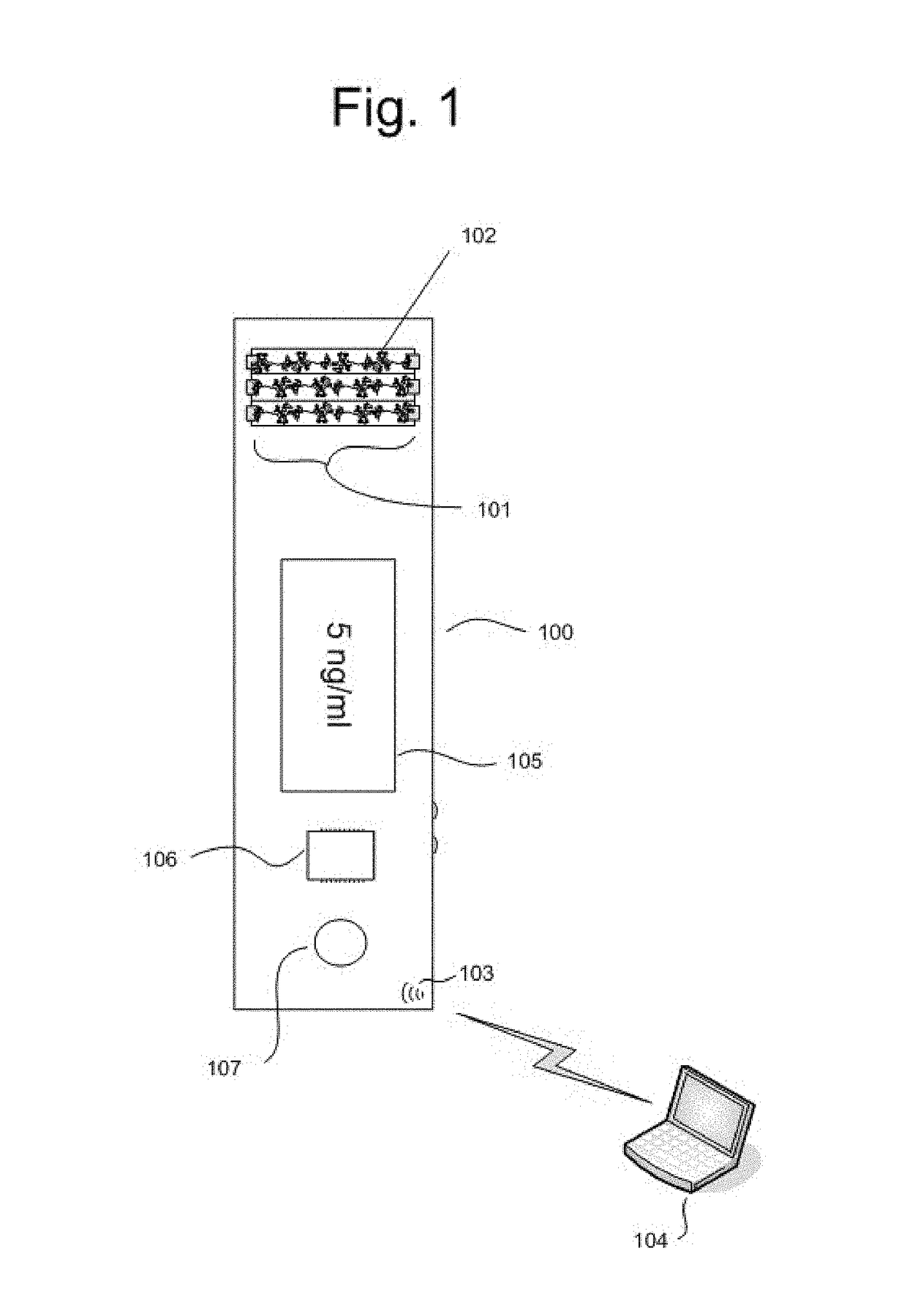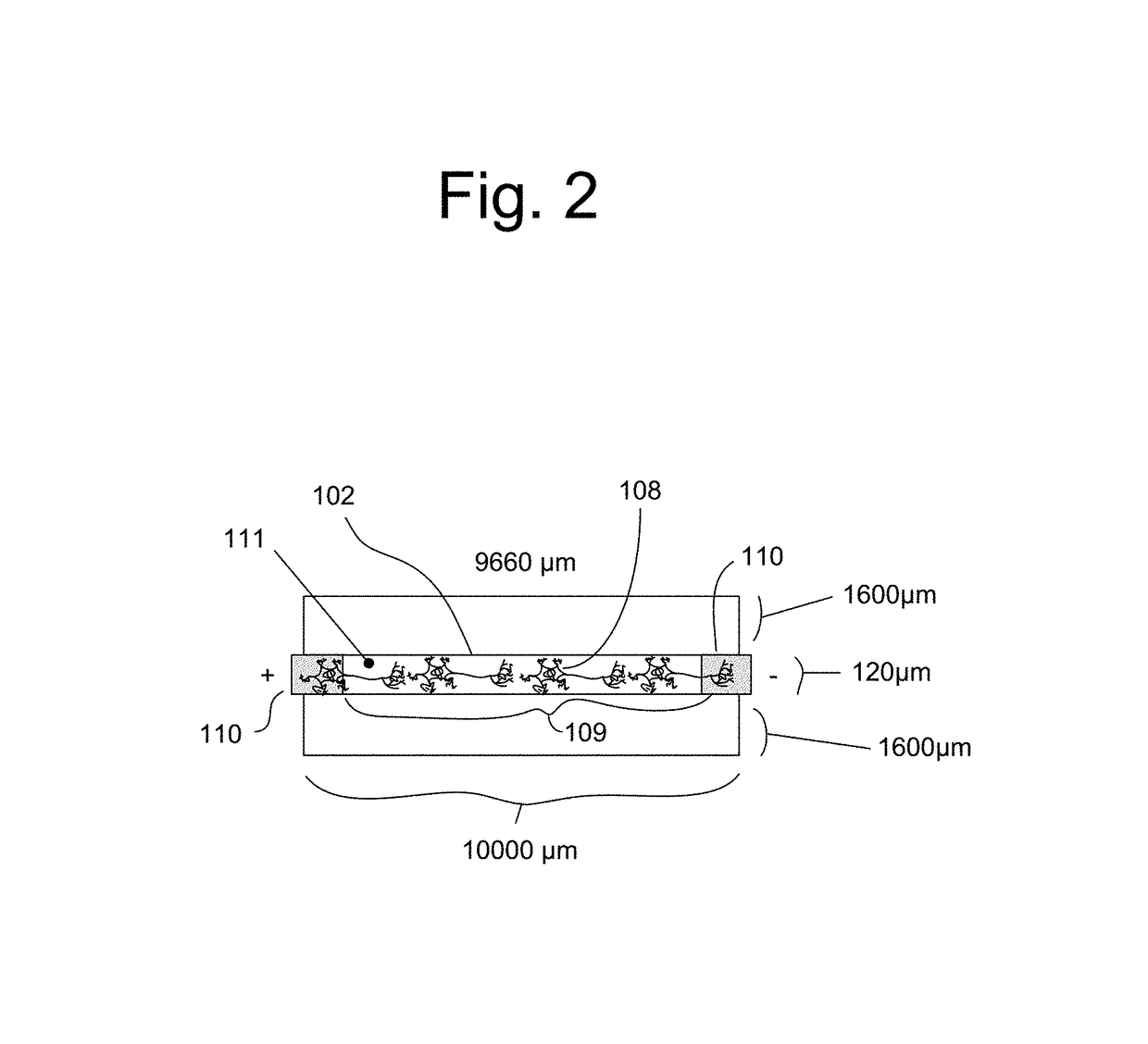Method and apparatus for real-time detection of human cannabinoid intoxication
a cannabinoid and real-time detection technology, applied in the field of methods and apparatus for real-time detection of human cannabinoid intoxication, can solve the problems of low test sensitivity of delta-9 tetrahydracannibanoid for portable saliva testing, and the military to achieve the effect of low test sensitivity
- Summary
- Abstract
- Description
- Claims
- Application Information
AI Technical Summary
Benefits of technology
Problems solved by technology
Method used
Image
Examples
Embodiment Construction
[0011]The following detailed description refers to the accompanying drawings. The same reference numbers in different drawings may identify the same or similar elements. The detailed description does not limit the invention.
[0012]Systems and methods described herein describe the cannabinoid detection device (CDD) 100 of FIG. 1. The CDD is one capable of sending −70 to +90 mV electrical voltage pulses across neural circuits 102 located on a removable chip 101 and simultaneously measuring the conductivity of the voltage potential of said circuit 102. The device may be interfaced to radio communications circuits such as Bluetooth, etc. 103 for the purpose of transmitting collected data to other electronic devices, such as a computer or smart device 104. The values corresponding to the CDD test are displayed in terms of toxicity on an analog display 105. The CDD uses a typical microprocessor circuit 106 for the purpose of calibration and analytics. The CDD is powered by a battery 107.
[0...
PUM
| Property | Measurement | Unit |
|---|---|---|
| concentration | aaaaa | aaaaa |
| concentration | aaaaa | aaaaa |
| positively stimulated voltage | aaaaa | aaaaa |
Abstract
Description
Claims
Application Information
 Login to View More
Login to View More - R&D
- Intellectual Property
- Life Sciences
- Materials
- Tech Scout
- Unparalleled Data Quality
- Higher Quality Content
- 60% Fewer Hallucinations
Browse by: Latest US Patents, China's latest patents, Technical Efficacy Thesaurus, Application Domain, Technology Topic, Popular Technical Reports.
© 2025 PatSnap. All rights reserved.Legal|Privacy policy|Modern Slavery Act Transparency Statement|Sitemap|About US| Contact US: help@patsnap.com



